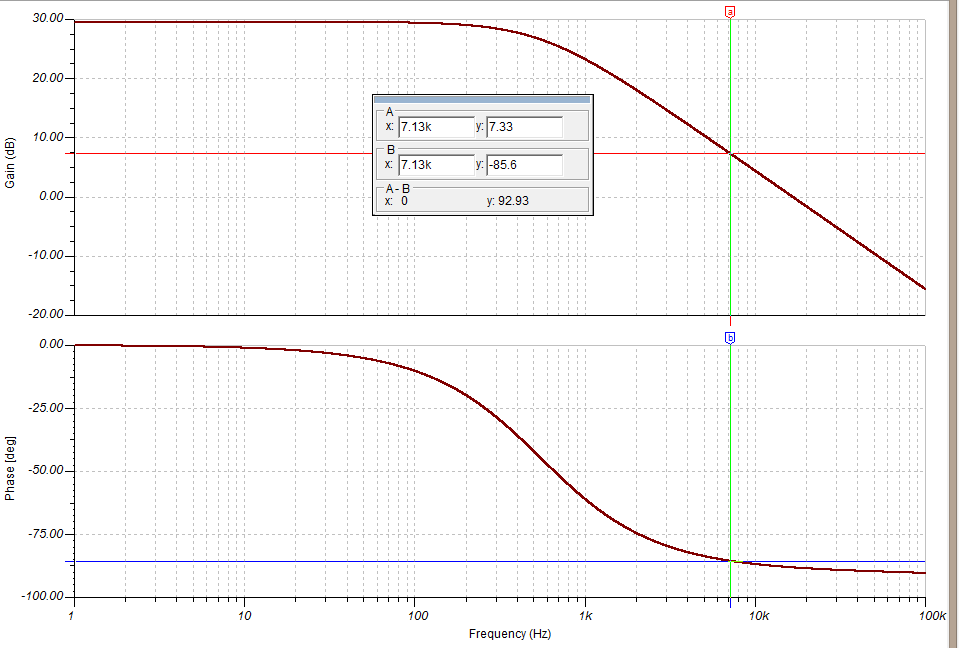I'm doing AC current sensing with a Rogowski Coil. These are great in almost every way except for their output sensitivity: about 460uV per Amp. That's basically in the noise for lower primary currents so before I send this signal across my PCB to the ADC I need to amplify it. My initial thought was to use a simple op amp.
Power supply is +12V.
Gain will be provisioned as 30x.
Fundamental frequency of interest is 60Hz, but I need flat bandwidth reaching up to ~4Khz to measure harmonics in the signal output from the transducer.
Slew rate should be at least 1V/uSec to cover the frequencies of interest (i.e. I don't want to be slew rate limited).
The "killer" requirement is (ideally) NO phase shift within the bandwidth DC-5Khz. I thought it would be a simple matter of selecting an op amp with a sufficiently high GBW and I've found many in the 5Mhz+ region that have a flat phase response to a reasonable fraction of that frequency, but begin with a 90 degree phase shift at DC (or so the graph with open-loop gain and phase vs. frequency shows). That's a non-starter.
So my question:
Can you recommend an op amp that has low (preferably <1 degree) phase shift between DC-5khz?


